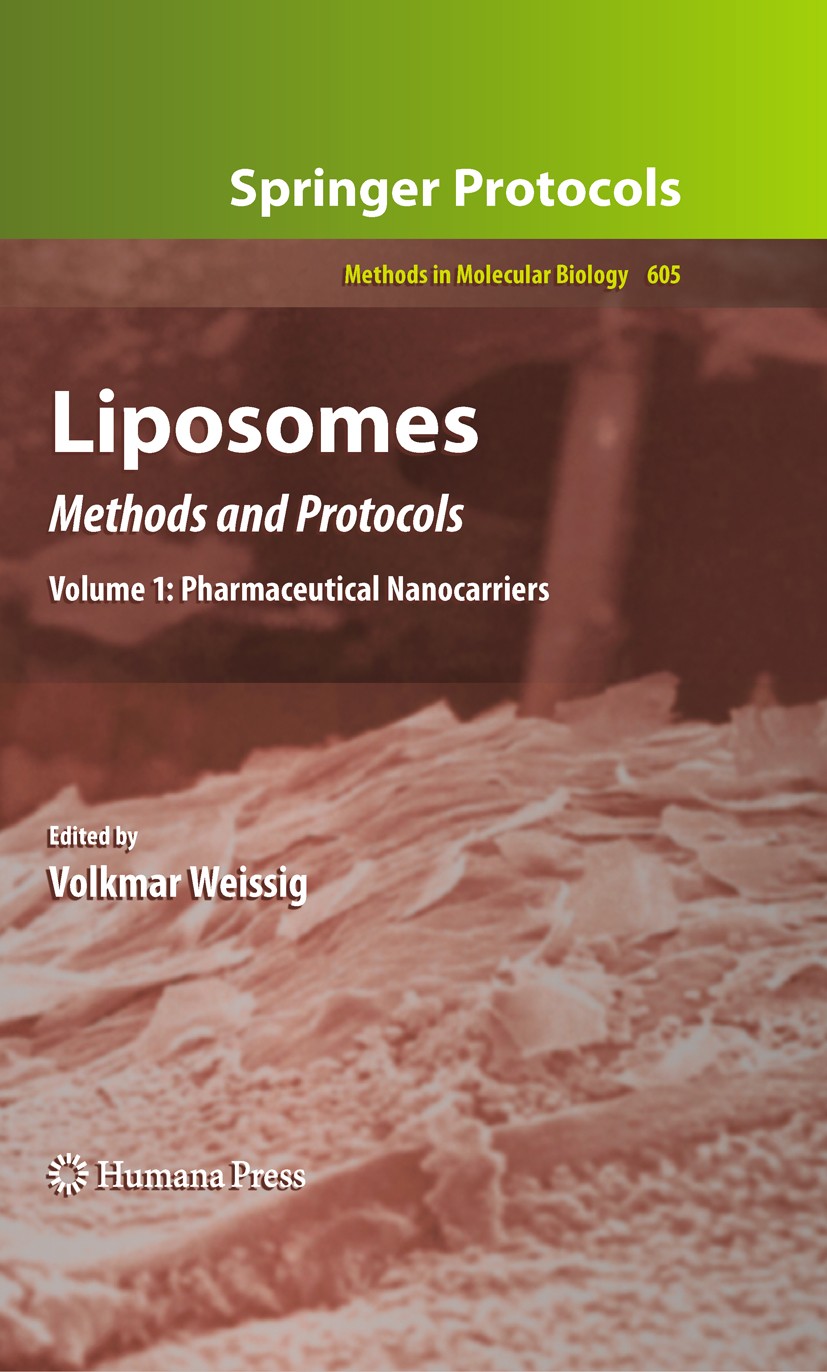| 书目名称 | Liposomes |
| 副标题 | Methods and Protocol |
| 编辑 | Volkmar Weissig |
| 视频video | http://file.papertrans.cn/587/586920/586920.mp4 |
| 概述 | Volume 1 specifically:.Covers all aspects of encapsulating hydrophilic and hydrophobic low-molecular weight molecules into liposomes.Analyzes comprehensively the current trends in liposome research.Pr |
| 丛书名称 | Methods in Molecular Biology |
| 图书封面 |  |
| 描述 | Efforts to describe and model the molecular structure of biological membranes go back to the beginning of the last century. In 1917, Langmuir described membranes as a layer of lipids one molecule thick [1]. Eight years later, Gorter and Grendel concluded from their studies that “the phospholipid molecules that formed the cell membrane were arranged in two layers to form a lipid bilayer” [2]. Danielli and Robertson proposed, in 1935, a model in which the bilayer of lipids is sequestered between two monolayers of unfolded proteins [3], and the currently still accepted fuid mosaic model was proposed by Singer and Nicolson in 1972 [4]. Among those landmarks of biomembrane history, a serendipitous observation made by Alex Bangham during the early 1960s deserves undoubtedly a special place. His fnding that exposure of dry phospholipids to an excess of water gives rise to lamellar structures [5] has opened versatile experimental access to studying the biophysics and biochemistry of biological phospholipid membranes. Although during the following 4 decades biological membrane models have grown in complexity and functionality [6], liposomes are, besides supported bilayers, membrane nanodisc |
| 出版日期 | Book 2010 |
| 关键词 | ATP; Antigen; Biological membranes; Biomedical nanotechnology; Cholestrol; Drug delivery vectors; Ethanol; |
| 版次 | 1 |
| doi | https://doi.org/10.1007/978-1-60327-360-2 |
| isbn_softcover | 978-1-4939-5708-8 |
| isbn_ebook | 978-1-60327-360-2Series ISSN 1064-3745 Series E-ISSN 1940-6029 |
| issn_series | 1064-3745 |
| copyright | Humana Press 2010 |
 |Archiver|手机版|小黑屋|
派博传思国际
( 京公网安备110108008328)
GMT+8, 2025-12-27 01:20
|Archiver|手机版|小黑屋|
派博传思国际
( 京公网安备110108008328)
GMT+8, 2025-12-27 01:20


